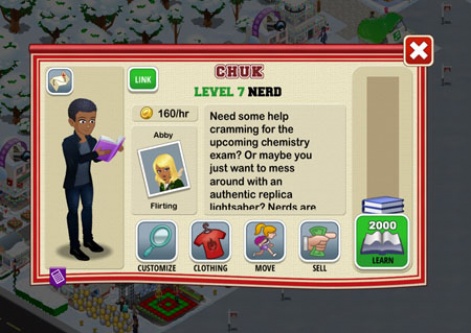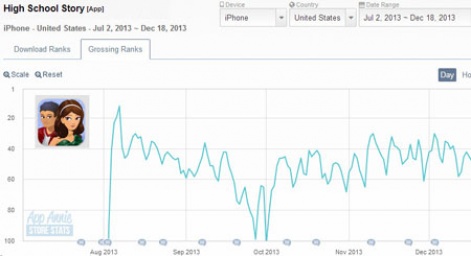As part of an ongoing series, SponsorPay - together with PocketGamer.biz - is running an interview series about market trends and future opportunities with C-level executives from key game developers and publishers.
This week we're talking to Oliver Miao, CEO of Pixelberry Studios.
A two-time entrepreneur, Oliver sold his first mobile games company, Centerscore, to Vivendi Games in 2006.
Oliver and his team have a rare track record of launching their past three iOS games - Surviving High School and Cause of Death while at EA; and High School Story while at Pixelberry - into the top 25 grossing chart

What was the inspiration behind High School Story?
Oliver Miao: High school is a really unique time in people's lives. For many, it's both a chance for a fresh start and a tumultuous time when personalities are transforming. For our studio, high school is the perfect setting for a story-driven game.
In 2005, our team developed Surviving High School. So when the three founders of Pixelberry started our company, it was natural for us concentrate on a genre we understood well. But this time with advances in technology, we created a game where players could design their own dream school.
What features do you think most bring the game to life?
High school is an inherently social experience. Our game gives players the opportunity to put their own real-life friends into the game. Players then get to choose which of their friends to send on high school adventures, which to put into the big game, which friends to help, and who to send on parties together.
At the same time, players can tilt their schools to be more orientated to academics, sports, arts, or other areas.
What's your focus when it comes to player retention?
Our studio was really fortunate in that we were able to re-assemble a large portion of the team that had worked on Surviving High School.
For seven years, we had released new episodes on a weekly basis. This meant we were able to form the core of our studio around a team that likely has the most experience on any gaming platform of shipping content week-in week-out.
Of 15 full-time staff, 8 are writers. We really believe in the importance of story in games, and our players agree. Over half of our players are still playing High School Story more than a week after they started playing.
Or in analytics speak, our D7 retention is over 50 percent.
How important was the soft-launch period to the game's success?
I believe the game resonated so well with players because we had a relentless focus on quality. When we first started, we naively thought that we might be able to finish the game in nine months. In fact, it took us a year and a half to launch.

We soft-launched for just one month because we only had a month of cash left. In fact, we had to borrow more money to launch the game globally.
Fortunately, our retention metrics during soft-launch were strong, so we made very few changes to our economy. Instead, we used the extra time in beta to add major new features, like new outfits during character level ups which helped with monetization. We also used A/B testing for the release of a launch promotion giveaway.
High School Story originally launched with in-app purchases but you added ad-based monetization channels afterwards. What led you to make that decision?
Frankly, from the start I was against having ads in High School Story. But after we launched, players started to ask us to add video ads so they could earn rings [hard currency] in the game. Overtime, this became one of the top requests from our players.

High School Story has been sitting pretty in the US top 100 top grossing chart for iPhone since launch - via App Annie
As we researched what many other simulation games in the top 100 were doing, we realized that incentivized video ads could provide a positive experience. If we gave players a choice, then the ads wouldn't be intrusive and only the players who wanted to progress faster would choose to view the ads.
Once we made the decision to add video ads, we looked for a video mediator so that we could ensure we had good fill rates. We didn't want to launch the feature and then disappoint the very players asking for the feature by not having enough inventory.
We're now using Sponsorpay to run ads from Sponsorpay, Vungle, and Applifier.
And our retention rates actually rose as a result of adding video ads. At the same time increasing the amount of rings in our economy allowed us to add more optional premium items in the game.
Our number one source of monetization still comes from players who want to progress faster or unlock specialized story content. But video ads have been a great way for us to earn money from players who aren't spending money.
What is your perspective on the current monetization landscape?
I understand why traditional game developers and game players dislike free-to-play games.
The early days of F2P were associated with lower quality games. But as the marketplace matures, quality is becoming more important for free games even than for paid games.

To keep a game in the top of the charts, developers need to keep their players happy in order to make the money to support operating more live services. It's a virtuous cycle that makes player satisfaction really important.
Incentivized and unobstrusive ads will be an increasingly important part of the marketing landscape. And ultimately more revenues means more money for teams to put back into creating higher and higher quality games.





















